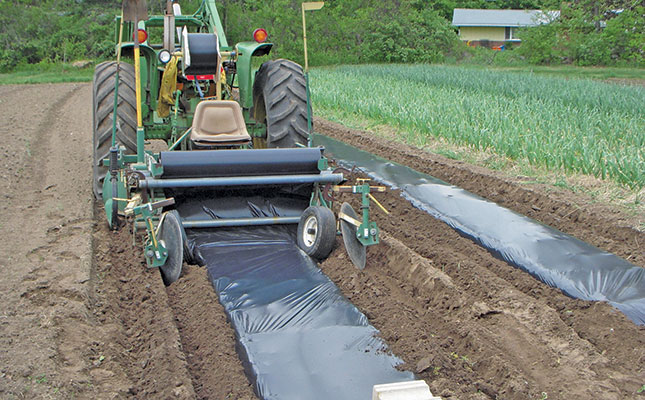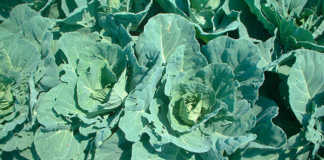
Photo: Wikimedia Commons
With some crops, evaporation pans can be used to determine when to irrigate. However, this method applies only to large areas planted to crops that are at the same stage of development; water loss by evaporation is therefore uniform. This does not apply to vegetables.
Moisture is lost through evaporation from the soil surface as well as transpiration from the plant’s leaves.
Capillary action
The amount lost through soil evaporation is affected by many variables. Compacted soil, for example, will lose more water than looser soil with a crumb structure. This is due to capillary action, in which moisture can move upwards against the force of gravity by creeping up surfaces (the wick effect).
A crumb structure breaks the wick effect of upward movement of moisture. If you loosen the surface layer of the soil, you also interfere with the wick action by creating a break in the upward movement of the moisture.
You can see this effect when you tramp on loose, moist soil and visit the site a little later. You will see that your shoe print is still wet, while the surface of the surrounding surface is dry.
This is because you have compressed the soil below the shoe, which increases the capillary action of the moisture below the surface. Within a short time, this water has tracked upwards to reach the surface at the footprint. Soil condition affects water loss.
Soil covering
You can also reduce moisture loss from the soil by using a covering. Plastic coverings are widely used for this purpose and, if black, will stop sunlight from reaching the soil surface and allowing weeds to germinate. Black sheeting also absorbs heat from the sun’s rays, which can help warm the soil in cold conditions for quicker plant growth.
Under hot conditions, however, it can make the soil too warm. For this reason, black plastic is often used on the underside, while white plastic faces the sun.
These covers not only conserve soil moisture, but prevent weeds from growing, which in turn help reduce labour costs.
Natural mulch
Yet another way to reduce moisture loss from soil is by having a mulch of various materials on the soil surface.
This has become a very important factor in agronomic crops grown under dryland conditions. I have seen this often where a fire gets into a maize land and consumes crop residue in winter. There is a notable difference in crop health and yield between the unburnt area and the section where the fire burnt.
The mulch traps a layer of moisture between the soil and the crop residue. Besides this, the burnt area with the exposed soil becomes much warmer from the sun, which accelerates evaporation from the soil surface.
Mulch also reduces surface soil compaction from heavy rain. It may look untidy, but crop
residue on the surface reduces water loss and becomes a source of food for earthworms and other organisms over a long period.
Bill Kerr is a vegetable specialist and a breeder of a range of vegetables.












